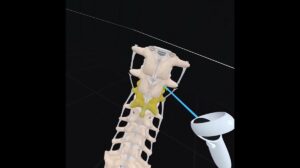NEW YORK (Reuters Health) – Combining eptifibatide with low-dose recombinant tissue-type plasminogen activator (rt-PA) appears to be a safe thrombolytic strategy for acute ischemic stroke, study findings in the December issue of Stroke indicate.
Prior research has shown that adding a glycoprotein IIb/IIIa inhibitor, such as eptifibatide, to a fibrinolytic agent can enhance recanalization rates when treating myocardial infarction. Dr. Arthur M. Pancioli at the University of Cincinnati College of Medicine, Ohio, and co-researchers have assessed the safety of such an approach in stroke.
The CLEAR (Combined approach to Lysis utilizing Eptifibatide And Rt-PA) stroke trial involved 119 patients who were randomized to receive low-dose rt-PA (0.3 or 0.45 mg/kg) plus eptifibatide (75 microgram/kg bolus followed by 0.75 micrograms/kg per min infusion for 2 hours) or standard-dose rt-PA (0.9 mg/kg) alone. The main outcome measure was the occurrence of symptomatic intracranial hemorrhage within 36 hours.
Based on the National Institutes of Health Stroke Scale score, patients in the combined drug groups had significantly worse strokes than those in the rt-PA-only group (14 vs. 10, p = 0.01). Patients in the combined drug groups were also more likely to have a higher modified Rankin scale score (p = 0.04).
One case (1.4%) of symptomatic intracranial hemorrhage occurred in the combination drug groups compared with two cases (8.0%) in the rt-PA-only group (p = NS). The study was halted after an analysis by an independent safety monitoring board indicated that it was unlikely that compromised safety would be seen with combination therapy with additional patient enrollment.
There was some evidence that standard-dose rt-PA alone was more effective than low-dose rt-PA plus eptifibatide, although the researchers emphasize that patients in the combination treatment groups were older and had worse stroke scores at baseline, which are likely to have impacted the efficacy results.
The authors note that another study, the CLEARER trial, is now in the works and will assess the safety and efficacy of the combined drug approach using a rt-PA dose of 0.6 mg/kg.
Reference:
Stroke 2008;39:3268-3276.




